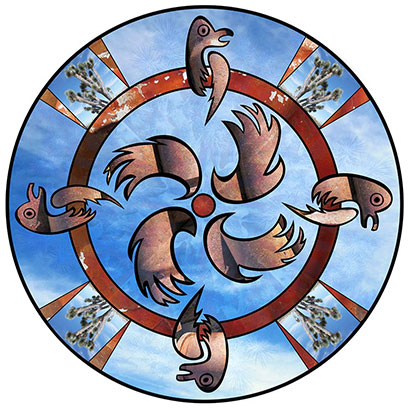 West, assistant professor of photography at Amarillo College, is currently sharing highlights of her project, Mojave – Ancient Lands and Animal Stories, at AC’s Southern Light Gallery, where she additionally serves as curator.
West, assistant professor of photography at Amarillo College, is currently sharing highlights of her project, Mojave – Ancient Lands and Animal Stories, at AC’s Southern Light Gallery, where she additionally serves as curator.
The exhibit will be on display through Feb. 19.
Although her photographs have appeared in more than 100 exhibitions across the U.S., West has exhibited her own work at Southern Light Gallery only once previously.
She chose to share this work with the community since it is the result of a recent artist residency courtesy of United Catalyst, a collaborative team that was at AC last spring for Worldwide Pinhole Photography Day.
The residency was last June and spirited her off to Mystery Ranch near Searchlight, Nev., where for several days she was totally isolated, or as she puts it: “alone in the desert accompanied by the ancient sound of silence.”
She says pervasive winds filled the air with dust, compelling her to fashion pinhole cameras from paint cans.
“Fine silt, dust and grit and digital gear do not go well together,” West said. “So, I started using quart paint cans as pinhole cameras. I would nestle the cans down into the dust, under the boughs of the Joshua trees.
“With hand-drilled holes and long exposures, these primitive cameras captured the wind, the dust, the shapes, and even the heat of the desert. The low point of view and curved film plane conveyed the strangeness I felt in this landscape, and for me expressed a poetics of time and place.”
West shot images in the mornings and spent the hotter portions of the day in a lonesome backcountry cabin, where she processed negatives and also drew meditative mandalas. These circular geometric configurations began as abstractions but quickly transformed to contain desert animals conjured from journal entries and digital photographs shot on site.
“For me, this place was exotic, uncharted territory, a primordial forest of plants and wildlife that I had never encountered before,” West said. “
From her pinhole landscapes she created Van Dyke brown prints by coating paper in the dark with light-sensitive material.
“Because of this, irregularities such as dry brush streaks, missed areas, and puddles of emulsion are not uncommon,” she said. “To work with these processes is to embrace the flaws as a part of the expression of ideas.”
The images created in Mojave were quite a departure from West’s 10-year project City Wall. Since 2007, she has made photographs of city walls in 25 states and describes her obsession as part treasure hunter, part anthropologist, and part archeologist sifting through the layers of contemporary culture.
AC’s Southern Light Gallery is located on the first floor of the Ware Student Commons on the Washington Street Campus. Gallery exhibits are free and open to the public.
For more information about the current exhibit or the Southern Light Gallery, please contact West at rwest@actx.edu or 806-345-5654.